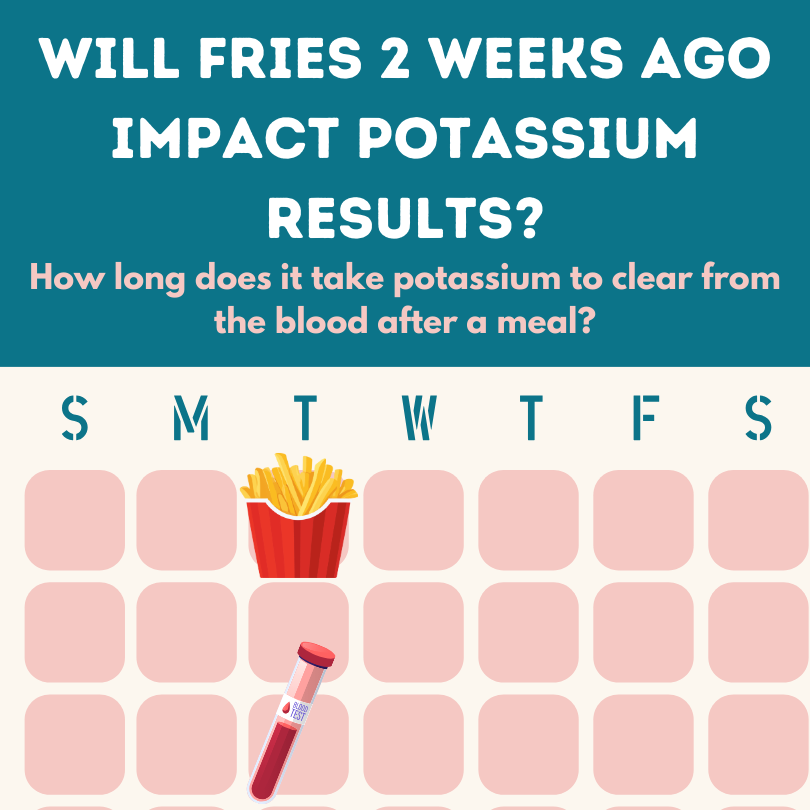I received an email asking how long dietary potassium intake will impact serum potassium levels. First and foremost – thanks for the email! And if anyone else has a question, feel free to email me at contact@kellypicard.com.
I thought this question was a great one for my blog. I am going to explore using a case scenario.
Case Scenario
A patient reports eating French Fries a couple weeks before their lab draw. When the potassium is checked, the result is 6.0mmol/L. The patient reports that aside from this one exception to their diet, they are eating their regular foods. When assessed, their regular diet appears to be low in potassium.
So, was it the French Fries two weeks ago?
Are there any studies that have tested how long after eating potassium stays elevated?
I think our best reference for this is a small feeding study done in Ireland on 8 hemodialysis patients:
This study compared the effect of two diets on serum potassium (and phosphorus) levels. Each person came to the lab two times to eat lunch and do a potassium curve. One lunch contained between 1800-2200mg of potassium, while the other contained 1600-2000mg potassium. Based on the Graph C below, looks like everyone ate at least 1000mg of potassium at the meal.

Does it matter if someone is pre-dialysis or on dialysis?
Compared to people who are not on dialysis, those on dialysis will have the most physiologically impacted potassium metabolism. Therefore, this study helps us understand what the “worst case” scenario is in terms of potassium clearance after a bolus.
In this study, dialysis didn’t occur until the following day, so the correction in potassium values occurred due to physiological potassium handling.
What happened to the potassium after the meal?
I have pasted the results graph in below.
You can see that potassium went above 6.0mmol/L in 5 people (the black line for participants 2, 3, 5, 6 and 7). The peak occurred within 2-3 hours after the meal. Then, the potassium started to decrease.

On the graph the final blood result is marker pre-dialysis. This was taken on the following day, just before each participant’s regularly scheduled dialysis run. There is not a clear pattern that what was eaten at the meal was associated with higher levels the next day. Here are the average blood values that the authors provided.

Back to our case study
Byrne’s et al’s study does not support that a high potassium meal, for example a plate of French fries, two weeks prior to the lab draw will explain a high potassium value. According to the USDA’s website, 100g of French Fries is ~400mg of potassium. In Byrne’s study, most people consumed more than 1000mg of potassium in one sitting and still had physiological corrections after eating.
The peak of serum potassium appears to occur within 3 hours after the meal and then starts to decrease. This is likely related to uptake of potassium intake the cells. If you want to know more about potassium physiology – check out this post.
Why did the two diets have different effects?
Wondering, why I didn’t get into the differences between the red and black lines? Join me in the next post, where I dive a little bit more into the differences between the diets and how that appeared to impact potassium levels.




2 thoughts on “Did eating fries two weeks ago cause hyperkalemia?”